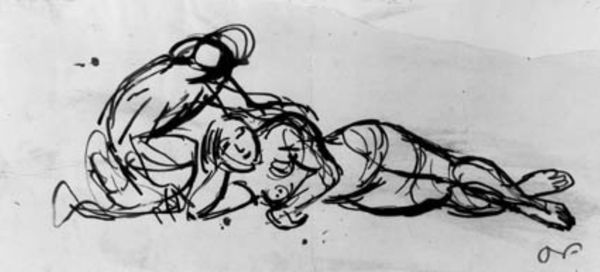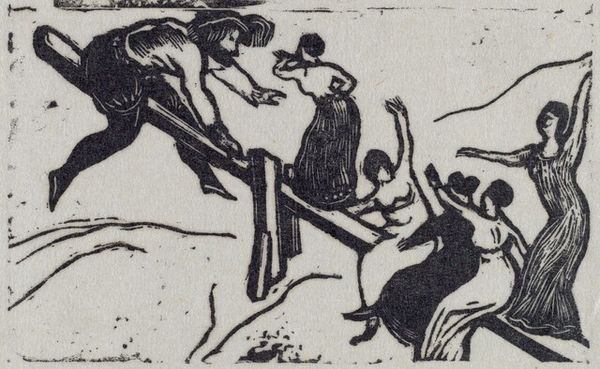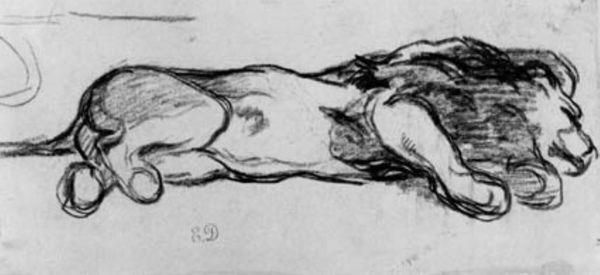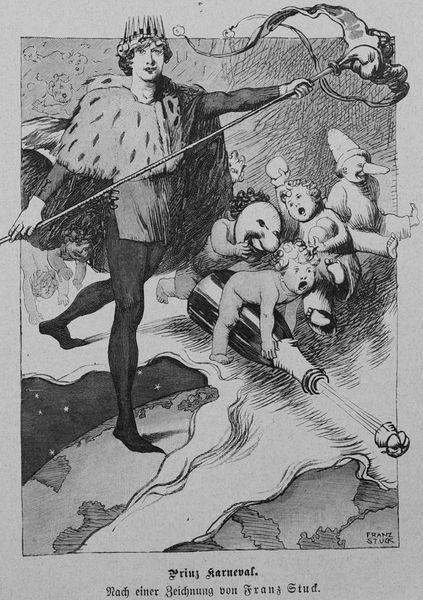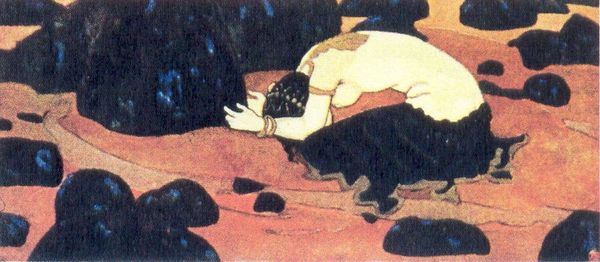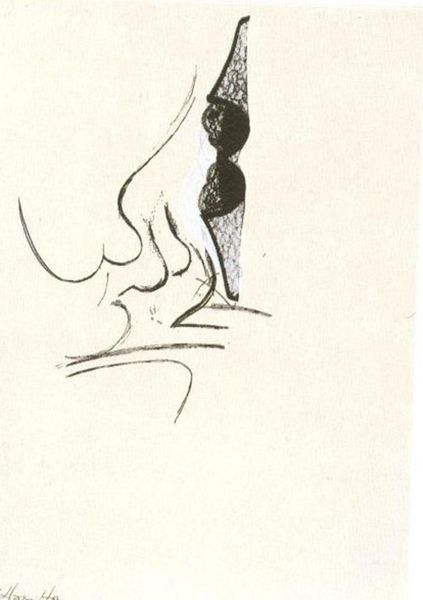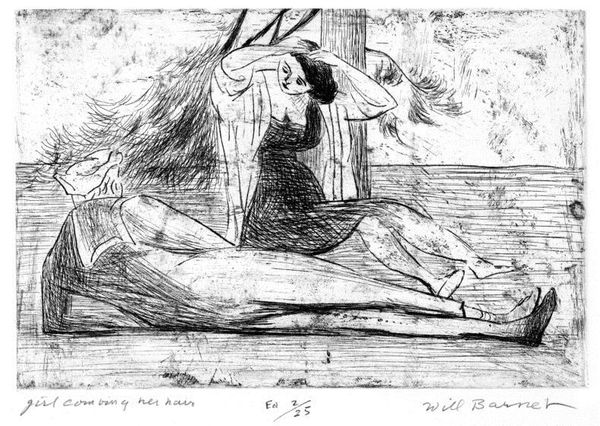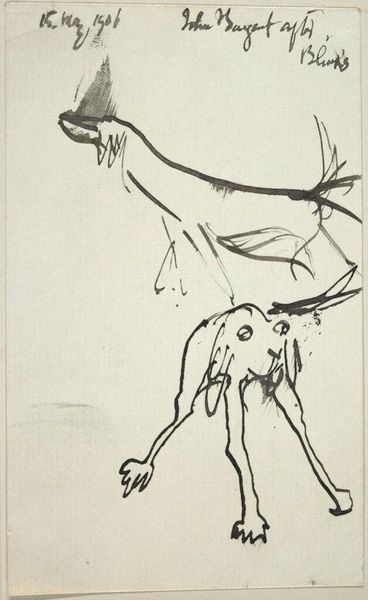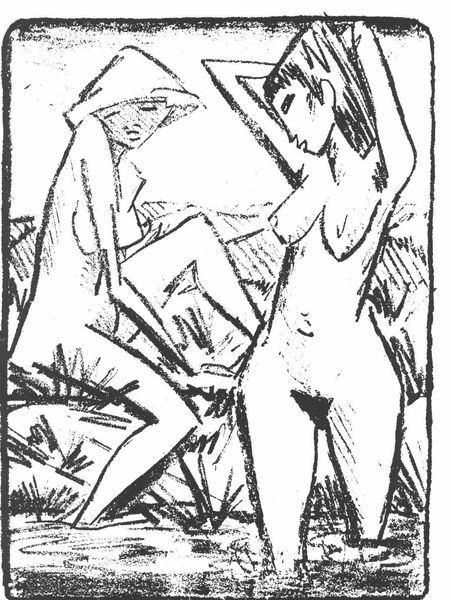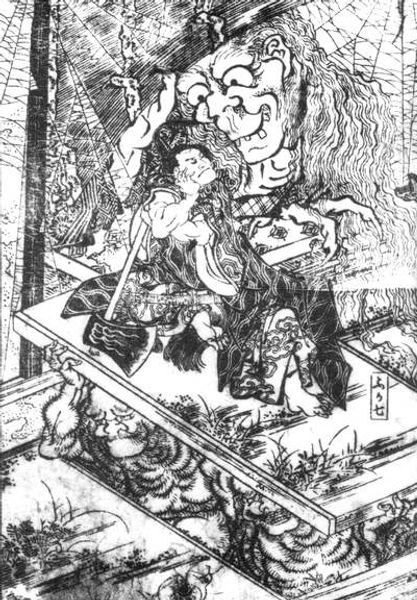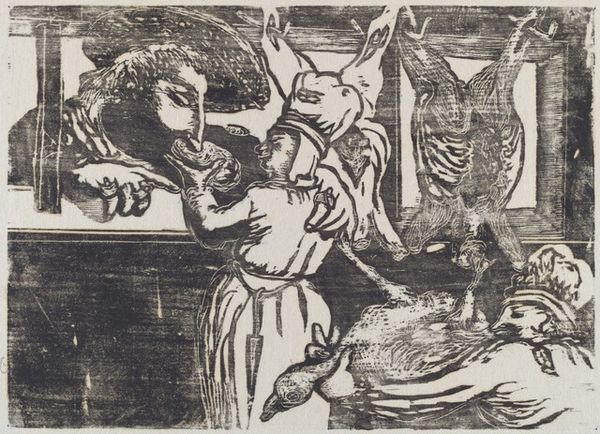
drawing, ornament, paper, watercolor
#
drawing
#
ornament
#
paper
#
form
#
watercolor
#
romanticism
#
line
#
mixed medium
#
watercolor
Copyright: Public domain
Curator: Today we're examining John Ruskin's "Under transept gallery", created around 1848, using watercolor and mixed media on paper. Editor: It’s immediately striking—the rhythm of the dark, flowing shapes. A strong interplay between the monochrome elements that almost feels musical in its repetition and variation. Curator: Ruskin's detailed architectural studies reflect the Gothic Revival, a potent ideological movement. Consider his deep engagement with the social implications of art, design, and the environment during the rise of industrialization. His critiques questioned Victorian values. Editor: Absolutely. But before we venture too far into societal critique, let's appreciate the craft here. The dynamism achieved through the careful alternation of light and dark is so appealing, it’s like seeing negative space itself take on a defined form. There’s structural integrity that speaks to Ruskin’s precision and artistry. Curator: And that structure mirrors the complex social architecture he critiqued. Ruskin saw the beauty in the Gothic as a model for a more humane society, resisting the alienation he found in industrial manufacture. It’s more than ornamentation; it represents labor and its moral dimensions. This drawing becomes a philosophical proposition. Editor: The ornamental element cannot be overlooked! How lines and shapes coalesce is interesting in itself. Each curve seems to answer the one before. Curator: Those curves are also political, gesturing at a return to artisanal creation that Ruskin felt offered workers dignity versus factory labor which only objectifies them. Even this fragment of ornament can spark those insights. Editor: It is amazing how he distilled so much emotion and thought into just a small amount of ornament. Curator: Indeed, this exploration into a small fragment illustrates that art’s profound effect can lie in reflecting broader conversations. Editor: The conversation continues, enriched by art that, formally speaking, intrigues in form and texture.
Comments
No comments
Be the first to comment and join the conversation on the ultimate creative platform.
